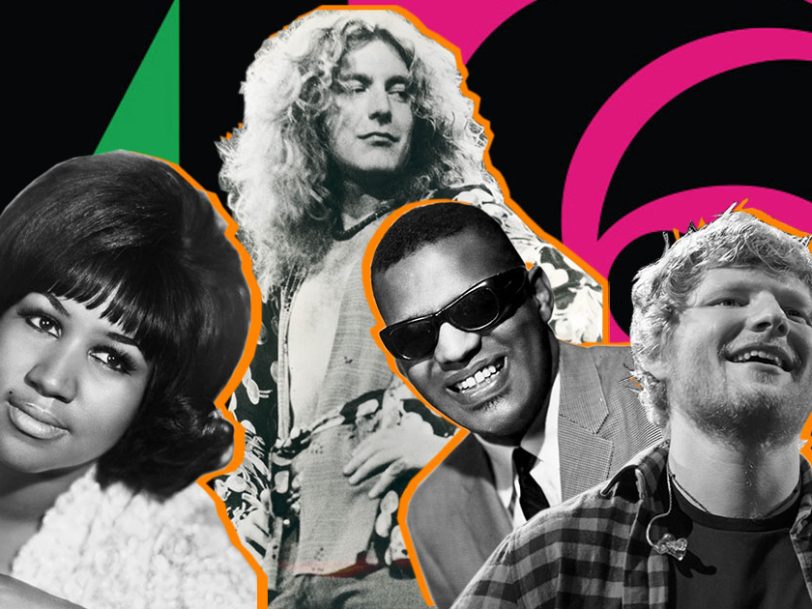A certain snobbery surrounds record companies: the story goes that small is creative and big kills creativity. But major labels have to be creative to thrive, otherwise they would always be outsmarted by younger, leaner companies able to react to every nuanced development in music. Besides, most major record labels did not start out as highly monetised enterprises. At the very least, they began with a founder who was interested in music. And the best of them were launched by people obsessed by music, who prized it above all other forms of art. These corporations are highly creative because it’s in their DNA from the get-go. Their success is built on sound, not a fetish for dollars. And the greatest of these labels is Atlantic Records, which has enjoyed – yes, enjoyed – a 75-year history of making hits from music its founding fathers loved and would continue to love, were they still around. Great music? Atlantic made it. Atlantic got it. Atlantic gave it to the world. And its legacy and influence continues to loom large over the industry today.
Delivering the music that matters: Atlantic Records’ legacy
Atlantic Records was highly creative from the start. Where it led, many followed. Motown, Island, Virgin – all were built on trying to get the music right above all else, because if you achieved that, success would ensue. They were following, consciously or otherwise, Atlantic’s blueprint, and that plan turned a one-room business run by a couple of music nuts into a major company. While other aspirants have faded, Atlantic thrives, with a roster the envy of other labels, and an awe-inspiring back catalogue. Atlantic Records is where Bruno Mars rubs shoulders with Aretha Franklin, where Solomon Burke shakes hands with Cardi B, Cream meets Kream, and Lizzo stands with LaVern Baker.
It hasn’t always been a smooth ride. Three quarters of a century in such a volatile business could never pass without incident. Atlantic has had its share of shocks: major artists leaving; the deaths of its founders; its musical focus falling from fashion; scandals, legal issues and all the rest. But the label has been nimble and flexible. It moved from jazz music to R&B, practically invented soul music, embraced the rock revolution it helped inspire, made disco matter and gave contemporary R&B an outlet – practically coming full circle in the process. Atlantic delivers the music that matters, and always has.
This ought to be on record: Atlantic launches in New York City
Atlantic Records started with love. Ahmet and Nesuhi Ertegun were the sons of Turkey’s first Ambassador to the United States and as hip as could be in the 40s. They were obsessed with jazz, the music of the era. Ahmet studied music at Georgetown University, in Washington, DC, and both brothers collected records. Their collection amounted to a vast 15,000 jazz and blues releases accumulated in a period when the average record collection was a small stack of scratchy shellac discs stashed in a cupboard. Ahmet spent his evenings soaking up the sounds of the capital’s jazz scene and decided to have a shot at the music business: the amazing music he was hearing in the clubs ought to be on record.
Ahmet persuaded his dentist to invest $10,000 in a record label, then asked Herb Abramson, a student who’d already dipped his toe in the industry, to join him. This was a crucial move. Abramson had seen some success with a label he co-owned, Jubilee, but money was not his driver. He wanted to run a label where great music was its raison d’être. So did Ahmet Ertegun. Abramson sold his shares in Jubilee and put $2,500 into Atlantic. The label now had some experience on board – experience motivated by art. In October 1947, Atlantic Records launched in Manhattan, in New York City, initially operating out of hotel rooms. This tiny company would go on to change the face of music. It sold contemporary Black music to white America like no label before it, but there was more than brilliant marketing in its eventual success: Atlantic Records changed the substance of the music itself and helped make the rock revolution possible.
A new youth music: early years and first hit records
Rock’s revolution was some way off when Atlantic released its first records, in January 1948: half of Led Zeppelin were not yet born and Mick Jagger hadn’t started school. The fledgling label employed Herb Abramson’s wife, Miriam, to run its publishing company – a smart engagement, as she proved a fierce protector of the company’s limited budget. At night, the two co-founders trawled New York City’s nightlife, a continuous A&R exercise that led to studio sessions by an array of jazz talent that included Johnny Hodges, Tiny Grimes and Errol Garner. Nobody was getting rich. Atlantic remained a shoestring operation, not all that different from numerous tiny labels struggling for a foothold in North America’s recording business.
But there were promising developments. Ahmet Ertegun proved an able songwriter, credited as A Nugetre, his family name reversed. A tip-off from a DJ led to a major talent in Ruth Brown. She would prove to be Atlantic’s first star, but her path to fame was not smooth: a car crash nixed her audition, so the enterprising label had her sign a contract in her hospital bed. The label also scored an early smash with Stick McGhee’s re-recording of Drinkin’ Wine Spo-Dee-O-Dee. This raucous R&B gem was heading for hit status, but McGhee’s original record label went bust before it could capitalise on the song, so Atlantic snapped it up. The hit kept Atlantic in ready cash and enabled it to release numerous records before Ruth Brown began to fulfil her mighty potential.




